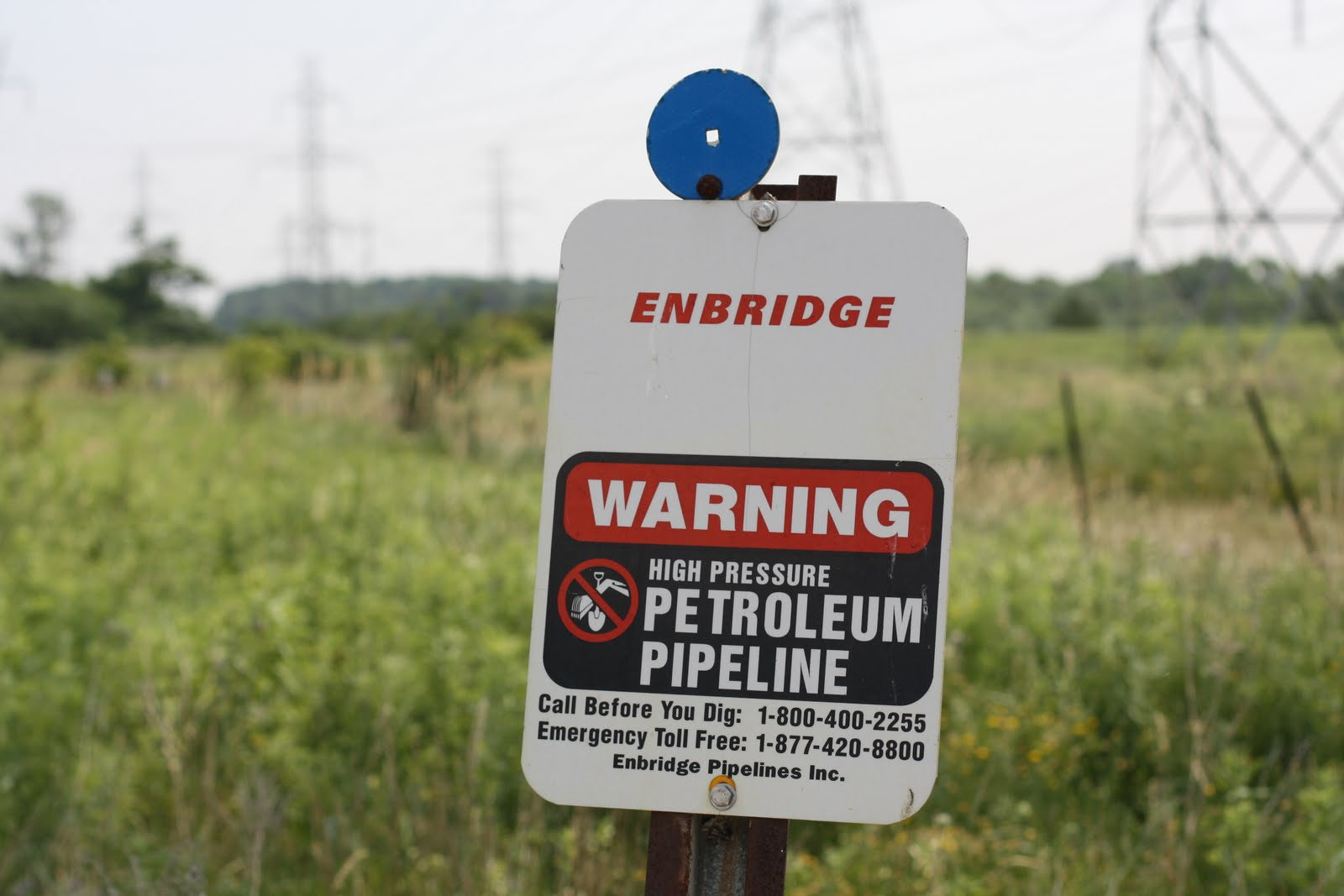Starting in the fall of 2017 Enbridge Inc. intends to replace an existing oil pipeline across 35 kilometers of rural Hamilton. This is part of the company’s Line 10 export pipeline from Hamilton to Seneca, New York. An old 12-inch pipe is being replaced by a new 20-inch pipe, effectively tripling the capacity.
The pipeline crosses 23 wetlands and 69 watercourses. About 11 kilometers are being re-routed around golf courses and across farmland to save Enbridge money.
During his election campaign, Justin Trudeau asserted the National Energy Board (NEB) under Harper had failed to consider climate change, had failed to respect Indigenous rights, and had placed major restrictions on public input. Yet, review of Line 10 began months after the election and used the same broken process including barring the public from hearings held in Hamilton.
Canada was built on treaties established between nations. The British and French were involved as were the Indigenous nations that settled here long before European explorers came to these shores.
The Haudenosaunee have a law known as the Dish with One Spoon that was meant to keep the peace between nations. The premise of the treaty was that there would be only one dish between everyone. It will hold a beaver tail. But there will be no knife to cut the tail because that could lead to spilled blood.
With only one dish everyone has equal shares to the game living within the hunting grounds. Hunting for food in a territory of another nation was allowed under the Great Law. But, all are responsible for making sure the dish is never empty which means we all share in caring for the land and the creatures living there. It also means keeping the bowl clean. This sharing, caring, and lack of knives meant all must cooperate in order to keep the peace.
The Dish with One Spoon law expanded along with colonization and today the Dish encompasses all of southern Ontario. The agreement, preserved in the form of a wampum belt, was kept at the Six Nations Grand River Territory until it was given to the Royal Ontario Museum in 1927.
Canada has a long history of ignoring contractual obligations with Indigenous nations when valuable resources and land are involved. Large corporations for the most part have chosen the same tactic with little to no interference from government. But, it’s time that practice ended.
Todd Williams is an engineer. Williams is also Haudenosaunee and occasionally does consulting work with the Haudenosaunee Development Institute (HDI) which is legislated by the Haudenosaunee Confederacy Chiefs Council (‘HCCC’) to represent HCCC interests in the development of lands within areas of Haudenosaunee jurisdiction, including but not limited to the land prescribed by the Haldimand Proclamation and the 1701 Treaty Area.
The 300-year-old Nanfan Treaty signed with the British ceded all Haudenosaunee land that makes up Southwestern Ontario to the crown in exchange for hunting rights in the territory. The thing is, treaties have no expiration date and the treaty is as valid today as when it was signed by the two nations entering into this agreement. And, therein lies the problem.
Since late January, Williams has been requesting Haudenosaunee monitors be included in all aspects of construction and maintenance of pipeline infrastructure through Haudenosaunee territory to ensure environmental and archaeological competence.
When Enbridge denied his requests, Williams began setting trap lines in the right-of-ways as a means to apply pressure for Enbridge to honour their duty to real consultation. When that was ignored Williams blocked access to work sites using his truck.
Enbridge in the meantime filed an injunction application in the Ontario Superior Court of Justice to protect their right to safely access the sites located on private land and to undertake preventative maintenance work.
If upheld the injunction means Williams will have to remove his traps further violating his treaty rights to harvesting on these territories. In response to the injunction, Williams occupied a maintenance dig sit for Enbridge’s Line 11 for over a week until he was served a contempt order for refusing to abide by the fist court order to evacuate Enbridge property. Williams now faces legal challenges and could really use public support.
Stand in solidarity with Williams in his peaceful protest against Enbridge. Show your support for Indigenous sovereignty and self-determination. Stand up for your community and your environment.
Individuals and organizations are encouraged to write letters supporting Williams’s treaty rights and defending the need for proper consultation with First Nations.
Williams Court date is Wednesday, April 26. It’s a short deadline, but letters are necessary to show the courts the greater community supports Williams and his cause.
Please email your letters to: [email protected]
The letters will be delivered directly Williams the morning of his court date.
An earlier version of this article erroneously indicated that Todd Williams’ acted as a representative of the HDI. In fact, he has worked as a consultant for the HDI in the past but has not represented the organization in any official capacity. He was acting as an individual. rabble.ca regrets the error.
Image: Flickr/Environmental Defence Canada
Like this article? Please chip in to keep stories like these coming.




